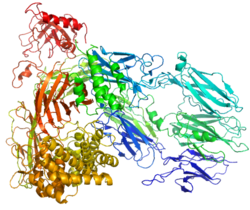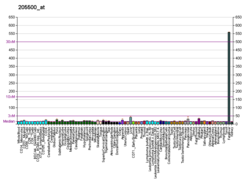Complement component 5 is a protein that in humans is encoded by the C5 gene. [5]
Complement component 5 is involved in the complement system. It is cleaved into C5a and C5b:
- C5a plays an important role in chemotaxis. [6]
- C5b forms the first part of the complement membrane attack complex.
Deficiency is thought to cause Leiner's disease.









